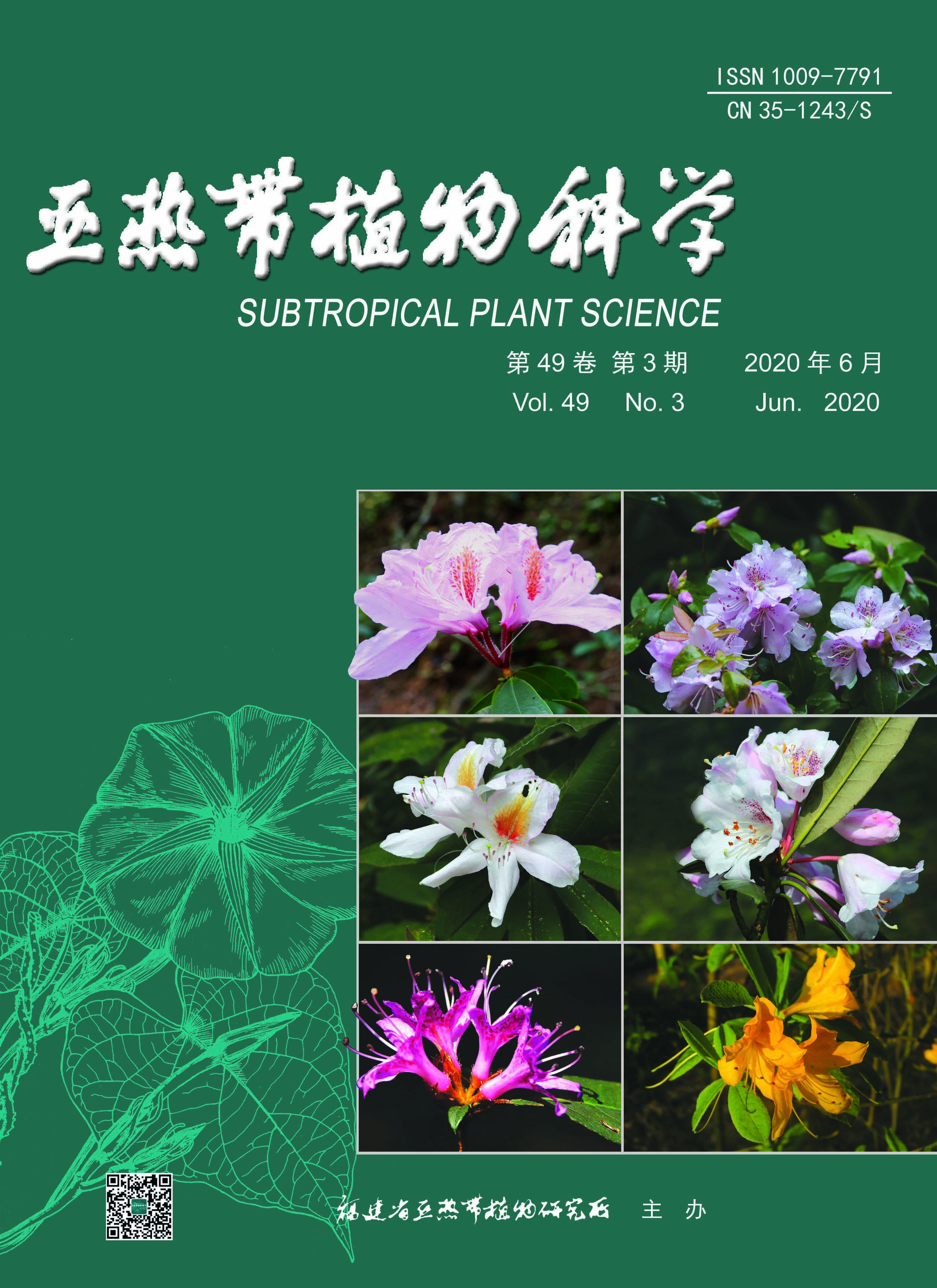|
|
Effects of Different Concentrations of Compound Fertilizer on Shoots and Cuttings of Pine Wood Nematode Resistant Mason Pine Picking Nursery
PAN Ting, CHEN Xue-lian, HAO Yan-ping, JIANG Chun-wu, WANG Song,WANG Jin-shan, CHEN Shi-juan, YU Xiao-song, CHENG Feng, WEI Qiang, XU Liu-yi
2020, 49(03):
215-219.
DOI: 10.3969/j.issn.1009-7791.2020.03.012
In order to study the effects of different concentrations of compound fertilizer on shoots and cuttings of pine wood nematode resistant Pinus massoniana nursery, three concentrations (2.5 g·L-1, 5.0 g·L-1 and 10.0 g·L-1) of compound fertilizer were used to fertilize the picking nursery, and shoots were collected for cutting experiment. Results showed that compared with control, the application of compound fertilizer increased the number of sprouting shoots, rooting rate, the number of adventitious roots, the length of the longest adventitious root, total root length and the number of lateral roots. Different concentrations of compound fertilizer had different effects on the traits mentioned above. 2.5 g·L-1 compound fertilizer increased the number of sprouts most significantly, an increase of 106% compared to the blank control, the difference reached a significant level (P<0.05); 5.0 g·L-1 was the most conducive concentration to increasing the number of adventitious roots, total root length and the number of lateral roots, which were respectively higher than those of the control 100.0%, 189.1% and 186.4%, and the increase in total root length reached a extremely significant level(P<0.01), and the number of lateral roots reached a significant level; 10.0 g·L-1 improved the rooting rate and the longest adventitious root length mostly, which were 23.2% and 134.7% higher than those of the control, respectively, and the increase of the longest adventitious root reached a extremely significant level. Comprehensive evaluation of 10 traits of shoots and their cuttings, the comprehensive target value of 10.0 g·L-1 was the highest, which made it the best fertilization concentration among the three concentrations.
References |
Related Articles |
Metrics
|
